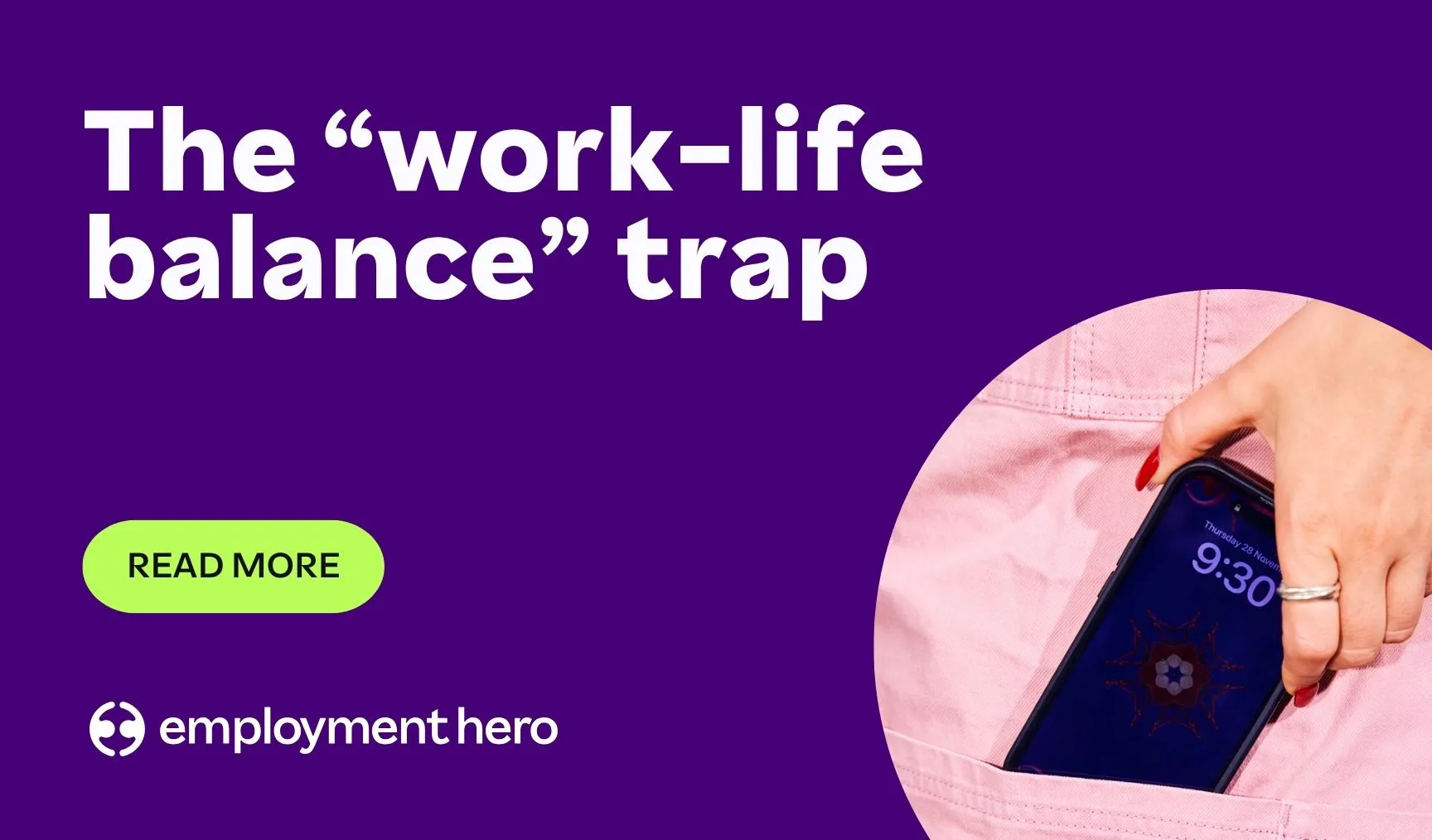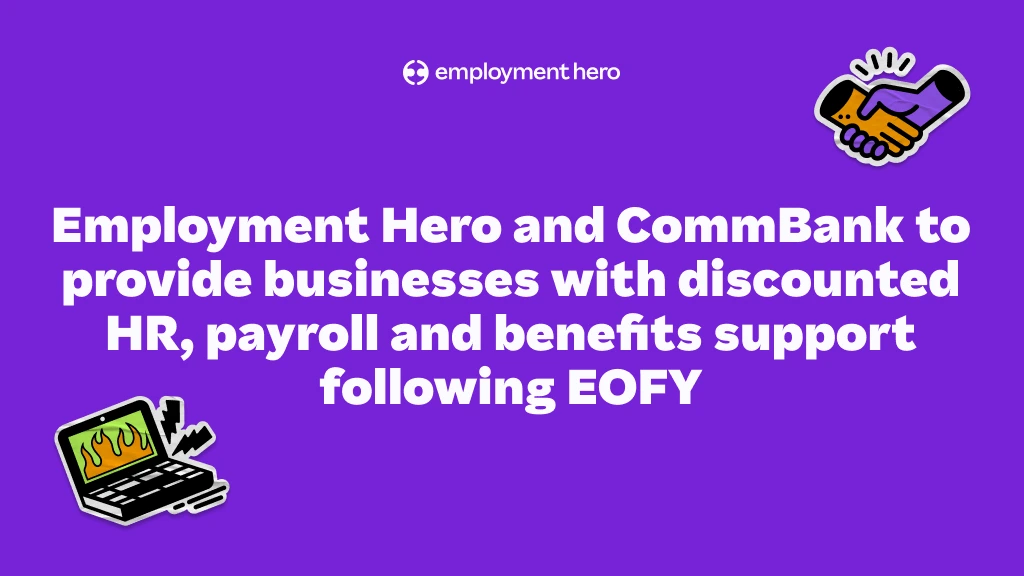Supporting neurodiversity in the workplace in 2025
Learn how you can champion neurodiversity in your workplace, and create an inclusive environment that celebrates different thinking styles.

In 2015, US firm JPMorganChase established their Autism at Work program. The program employed four team members with Autism Spectrum Disorder (ASD) to work across software development, engineering and business analysis.
After six months of the program, the neurodiverse team members were found to be 48% faster and as much as 92% more productive than their neurotypical counterparts. There are now hundreds of neurodiver1se workers working for the company around the world. The program has been so successful in filling roles, especially hard-to-source tech roles, that executive James Mahoney suggests workers with ASD could solve the global tech talent shortage.
Neurodiversity is something that can often be misunderstood. As employers want to welcome a range of diverse thinking to strengthen their workforce, we need to understand the various experiences that come with being neurodivergent, and the advantages of having people with neurodiverse profiles on our teams.
But first, let’s explore what it means to be neurodiverse.
What is neurodiversity?
Neurodiversity (or neurodivergence) is an umbrella term that can help describe neurological differences. Aspergers Victoria defines neurodiversity as “most commonly associated with Dyslexia, Dypraxia, ADD, ADHD, Aspergers and Autism Spectrum Conditions but includes any condition that affects some, but not all, thinking skills.”
Most conditions are life-long and diagnosed early childhood, but some may go undiagnosed into or throughout adulthood.
“This concept is that neurological differences are to be recognised and respected like any other human variation. These are ‘spectrum’ conditions, with a wide range of traits and characteristics which share some common features in terms of how people process information.”
Neurodivergent is another word to describe someone who meets a neurodiverse profile.
A quick neurodiversity glossary
What does neurotypical mean?
Neurotypical refers to a person who does not have a neurodiverse profile.
What is aspergers and autism?
Autism – or Autism Spectrum Disorder (ASD) – is a condition that can affect a person’s experience of the world, including how they interact with their environment and engage with others. Those on the autism spectrum may have difficulties in understanding small talk or jokes, they may be sensitive to sensory elements around them and may make repetitive movements to help process stress or excitement.
Research suggests that around 20% of people with autism have exceptional or above-average skills in one or more areas such as reading, maths, art, mechanics or music. They can focus on one thing for extended periods of time and often pick up small details that neurotypical people cannot.
Aspergers is a condition that can also be captured under ASD. It is sometimes considered to describe ‘high-functioning Autism’, towards the more neurotypical end of the spectrum. People with Aspergers may have similar difficulties to those with autism but to a lesser degree.
Some examples of people with ASD:Actor Stephen Fry, comedy writer Dan Harmon and American model Heather Zumich.

What is dyslexia?
People with dyslexia have difficulty in reading and writing words. Although there is no difficulty in comprehension or learning, spelling and reading can be challenging. These challenges may lead people with dyslexia to find alternative pathways to learning.
There are many strengths that come with dyslexia, including an inquisitive nature, problem-solving, analytical skills, and leadership skills. Scientists estimate that about 3-10% of the global population has dyslexia. One of the most famous dyslexics is Sir Richard Branson, who attributes his unique management skills and business success to the condition.
For further insights into creating an inclusive environment for employees with different abilities, read this guide on supporting people with disabilities in the workplace.
What is ADHD?
Attention Deficit Hyperactivity Disorder – commonly known as ADHD – affects about 1 in 20 Australians. Challenges of the condition can include inattentiveness, difficulty in remembering information and impulsivity. The term ADHD is inclusive of the condition ADD (Attention Deficit Disorder), which is becoming less commonly used.
The extensive strengths of people with ADHD include bringing high energy to their tasks, turning their impulsivity into creative spontaneity, inventiveness and hyper-focus.
Some well-known people with ADHD include Celeste Barber and Justin Timberlake.

Other common neurodiverse conditions include Tourettes, Dyspraxia and Dyscalculia.
Productivity, expertise and neurodiversity
As we’ve explored throughout our Diversity and Inclusion Series, welcoming and celebrating workers from all backgrounds and identities can have significant business benefits, as well as helping challenge wider social inequalities.
As we can see by exploring the strengths of different neurodiverse conditions, many neurodiverse people have higher-than-average workplace abilities. “The profile of a neurodivergent person is that they’re often a subject matter expert in their area,” says Sofia.
“If you’re placing individuals in the right roles, we’ve found that activity can be 40% above that of a neurotypical person.”
This aligns with strategies to create a healthier workplace, as outlined in signs of a healthy workplace environment.
Neurodiverse employees’ can bring a whole new perspective to your business. The neurodiverse workforce can excel in a variety of areas. People with Autism can be a great fit for tech and cybersecurity and people with ADHD can thrive in creative roles.
What challenges can neurodivergent people face in the workplace?
Despite these many strengths, neurodivergent people face challenges in entering the workforce. “We’ve got the ABS statistic that barriers to unemployment for high-functioning neurodiverse profiles are at about 40%,” says Sofia Neale of Aspergers Victoria. “We suspect that it’s significantly higher, now that there’s higher levels of unemployment given the current situation.”
To tackle these challenges, consider these 8 actionable tips to reduce unconscious bias in recruitment.
A major barrier to the workplace for neurodivergent people? Popular recruitment processes are not designed for many neurodiverse communication styles.
Neurodiverse people can become confused by different language used in recruitment processes, and many cannot express the extent of their skills in such a high-pressure social environment. If the recruiter or hiring manager does not understand neurodiversity, the neurodiverse candidate may lose out due to an unconscious bias towards neurotypical communication styles.
There are also extensive misconceptions about neurodiverse workers. Some HR professionals may be concerned about the arrangements that need to be made for the employee, not realising that comorbidities associated with various conditions can be easily solved.
Steps to support neurodivergent people in the workplace
Let’s work through some easy ways to support a neurodivergent workforce, from recruitment to employee experience and career journeys.
1. Remove jargon from communications
When you’ve worked within a business for a while, it’s easy for jargon to become an unconscious part of your language. From job ads to internal communications and HR policies, documents can become loaded up with jargon that can be difficult to understand for those with neurodiverse profiles. “It’s not necessarily something that’s occurring on a conscious level,” says Sofia.
“It’s just language that we tend to use within the workplace and therefore we incorporate that into our writing. That in itself is stigmatising the neurodiverse individual.”
When you create a new document for internal or external use, do a sweep for jargon or confusing language. Especially in documents like job ads and position descriptions, pull out anything that could have a confusing or double meaning.
Call in a fresh pair of eyes to help identify business or industry jargon if required. You want to be as clear and concise as possible. This exercise has many added bonuses. Working to make documents more concise can not only help people of neurodiverse profiles understand them, you might find that many people in your business benefit from the renewed sense of clarity. Simple and straightforward communications can build trust by cutting any confusion.
“What we’ve also found is that by simplifying language anyway is a benefit for everyone in the team, so that sort of investment won’t only address this issue it can address broader systemic communication issues,” says Sofia.
To throw back to Sir Richard, the business leader cites the use of simple language – spurred by his dyslexia – as a great business tool. Not only did it help him lead the company, simple communications helped the brand build consumer trust. “I need things to be simple for myself,” he told Bloomberg.“Therefore Virgin, I think, when we launch a financial service company or a bank, we do not use jargon. Everything is very clear-cut, very simple. I think people have an affinity to the Virgin brand because we don’t talk above them or talk down to them…”
2. Include language around neurodiversity in your policies
Simple modification to your policy documents can make all the difference. Just as you would mention any other kind of background or identity, neurodiversity needs to have a place in your diversity and inclusion policy. As a mostly invisible condition, neurodiversity can be forgotten about in these policies.
As well as mentioning neurodiversity, share details about reasonable supports. To provide reasonable support means that the company is willing to make arrangements with the employee to make sure they can work.
All employees, regardless of background, are due reasonable support. However, stating it clearly in regards to neurodiversity, conveys to the neurodiverse employee that the employer will bring a level of understanding to their personal needs. As Sofia says, “that’s a simple modification to a policy that can alleviate the segregation that a person can feel.”
💡 New to writing workplace policies? These guidelines can help!
For more ways to foster an inclusive environment, check out ways to create an inclusive workplace.
3. Avoid using personality tests as part of recruitment
“The selection and recruitment process isn’t necessarily geared towards maximising performance for someone on the spectrum or who might have neurodiverse tendencies,” says Sofia. A key recruitment technique that can be alienating for the neurodiverse individual? Personality tests.
Online personality tests are becoming increasingly popular for recruitment. Personality tests are meant to help the employer understand the candidate’s character traits, giving them insights into what they might be like to work with. While a neurotypical individual might be able to easily answer questions in a way that would produce a ‘good’ result, neurodiverse candidates may find these tasks difficult to navigate.
“What we’re finding is a lot of those personality assessments aren’t necessarily being well received by our community,” says Sofia. “So they don’t understand the question therefore they’re not answering the questions correctly and are being categorised or marginalised in an assessment process like that.”
💡 Concerned about bias in recruitment? Here are 8 ways to tackle it.
4. Look for ‘culture-add’ instead of ‘culture-fit’
The idea of ‘culture-fit’, where an incoming staff member can easily slide into an existing team dynamic, is a great idea in theory. In practice, it’s very limiting. New personality types can help teams evolve and grow. A better thing for recruiters to look for is ‘culture-add’. What diverse perspectives can the candidate bring to the team? How can their working styles and insights help break roadblocks within the business?
“I think that’s a core area, just changing the mindset around what diversity means and understanding the benefits that it can have to a team and productivity,” says Sofia. How can you understand the extent of the ‘culture-add’ within your recruitment process if your candidate struggles to explain their skills in face-to-face scenarios?
Encourage your recruitment team and hiring managers to have an open frame of mind in how they discover and uncover new talent. “Because your mainstream interview processes don’t necessarily align as well with the neurodivergent profile, then maybe modify that process to have a discovery day, or to have that person in to demonstrate their core skills.”
5. Be conscious of comorbidities
Comorbidities are additional conditions that are triggered by a primary condition. Employers should be aware of these sensitivities and, just as suggested in step 2, find suitable adjustments for them.
“It’s not uncommon to have for example an autism diagnosis (an ASD diagnosis) and to also have other comorbidities around light, sound, smell, and those things can actually really impact a neurodiverse profile’s ability to function well within the workplace,” says Sofia.
When a business owner or office manager might hear modifications, they might be worried about the cost involved. The answer is often much simpler than making any significant changes to the office environment. “The reality is that with a lot of these sensitivities, they can just be simple modifications like moving a person from one desk to another.”
Sofia also recommends flexible, hybrid and remote working arrangements – something most businesses are experienced in after 2020. She recommends creating a flexible working plan option where the neurodiverse employee can work from home in their comfortable environment for a day or two each week.
How to be an ally for neurodiverse team members
Allyship is an important part of building a welcoming and encouraging environment for neurodiverse team members. It’s a personal commitment, whether you’re a business leader, HR professional, manager or colleague, to support and stand up for someone who may experience discrimination or disadvantage. It also applies to supporting a group of people, such as the neurodiverse community.
Anyone can be an ally, but it’s not as simple as some encouraging feedback or small concessions. It requires personal reflection and development. To be an ally, you need to be aware of your personal bias and work on unlearning it. Take note of how you perceive things and put yourself in someone else’s shoes often. You could be surprised by how your perception changes.
You also have to recognise your privilege, and how your experience of the workplace might be easier than other colleagues or team members, due to circumstances outside their control. Use your voice to amplify the voices of those people or groups who aren’t being heard, and call out inequality or discrimination when you see it. Give them opportunities to have the same platform to speak as you do.
In the end, being an ally for neurodiverse team members is all about empathy. You should be seeking to understand their challenges in the workplace and asking yourself what can be done to make it better. Importantly, you should also be doing it on their terms, so gauge carefully what a neurodiverse colleague might be comfortable with and start with that introspection before all else.
The wrap up
People with neurodiverse profiles should make up a key part of your diversity and inclusion strategy. The neurodiverse workforce will not only bring a new way of thinking to your business, they often bring exceptional skill sets and high levels of productivity.
Making simple changes to your recruitment and people management strategies can ensure that neurodiverse staff members understand that they will be embraced by the business and help them work to their full potential.
Thank you to our expert, Sofia Neale of Aspergers Victoria. https://aspergersvic.org.au/
Want to learn more about diversity and inclusion in the workplace?
Here are more helpful resources on diversity and inclusion:
Related Resources
-
 Read more: The ‘work-life balance’ trap: Why promising it is hurting your SME recruitment (and what to promise instead)
Read more: The ‘work-life balance’ trap: Why promising it is hurting your SME recruitment (and what to promise instead)The ‘work-life balance’ trap: Why promising it is hurting your SME recruitment (and what to promise instead)
For growing SMEs, work-life integration is a sustainable way to support your team and attract top talent. Explore how your…
-
 Read more: Job ad guide: How to attract top candidates
Read more: Job ad guide: How to attract top candidatesJob ad guide: How to attract top candidates
Looking to hire your perfect match? The way you pitch your open role can be the difference between landing or…
-
 Read more: Employment Hero and CommBank to provide businesses with discounted HR, payroll and benefits support following EOFY
Read more: Employment Hero and CommBank to provide businesses with discounted HR, payroll and benefits support following EOFYEmployment Hero and CommBank to provide businesses with discounted HR, payroll and benefits support following EOFY
Eligible CommBank Yello for Business customers will get the first 3 months free on any Employment Operating System subscription with…






















